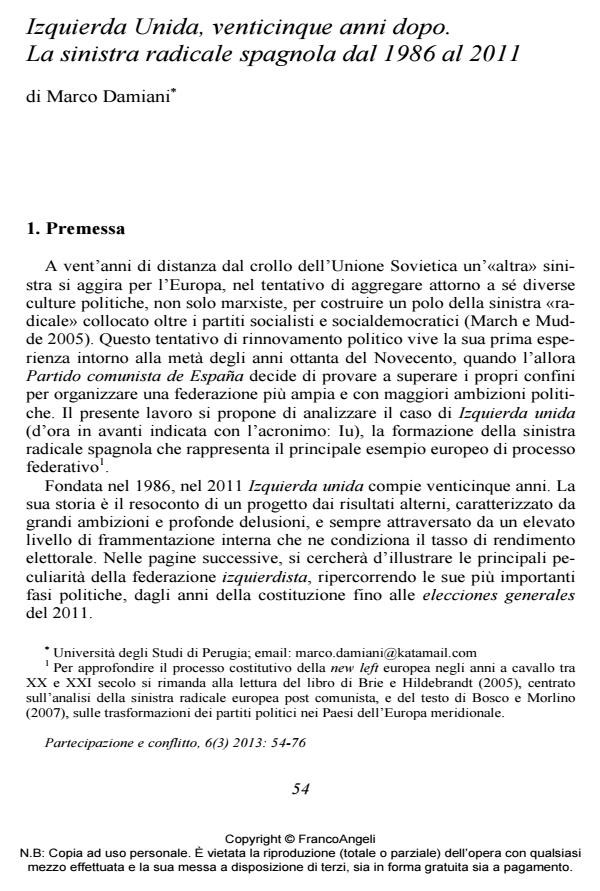Izquierda Unida, venticinque anni dopo. La sinistra radicale spagnola dal 1986 al 2011
Journal title PARTECIPAZIONE E CONFLITTO
Author/s Marco Damiani
Publishing Year 2013 Issue 2013/3
Language Italian Pages 23 P. 54-76 File size 330 KB
DOI 10.3280/PACO2013-003003
DOI is like a bar code for intellectual property: to have more infomation
click here
Below, you can see the article first page
If you want to buy this article in PDF format, you can do it, following the instructions to buy download credits

FrancoAngeli is member of Publishers International Linking Association, Inc (PILA), a not-for-profit association which run the CrossRef service enabling links to and from online scholarly content.
After the collapse of the Soviet Union «another» left is now present in Europe, in an attempt to build a reformist maximalist pole, placed on the left of the socialist parties. This experiment lived his first experience in the second half of the twentieth century, when the Spanish Communist Party decided to try to overcome its borders, organizing a broader federation with more political ambitions. Izquierda unida (Iu) was born in 1986 and its story has shown alternate results, strongly influenced by the electoral trend of the Partido socialista obrero español. Despite this, Iu defends its autonomy, maintaining in time the possibility of structuring an alternative party that differs from the Spanish bipolar parties.
Keywords: Party politics, Left, European Radical Left, Spanish Left, Izquierda unida.
- From the Communist Party to the Front de gauche. The French radical left from 1989 to 2014 Marco Damiani, Marino De Luca, in Communist and Post-Communist Studies /2016 pp.313
DOI: 10.1016/j.postcomstud.2016.09.001
Marco Damiani, Izquierda Unida, venticinque anni dopo. La sinistra radicale spagnola dal 1986 al 2011 in "PARTECIPAZIONE E CONFLITTO" 3/2013, pp 54-76, DOI: 10.3280/PACO2013-003003